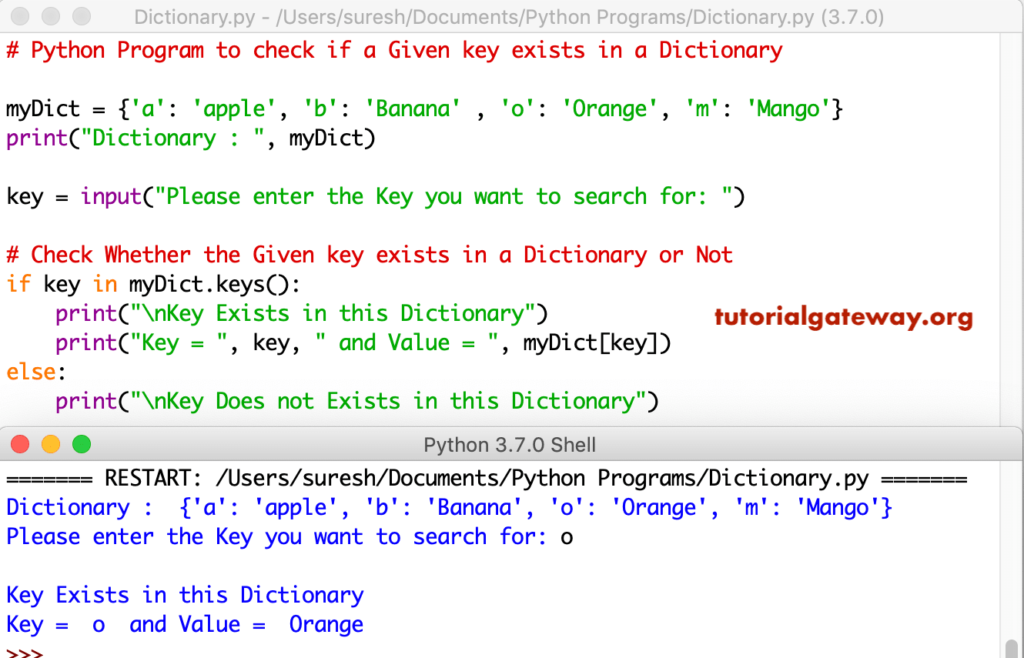

- PYTHON MERGE DICTIONARIES SAME KEYS UPDATE
- PYTHON MERGE DICTIONARIES SAME KEYS CODE
- PYTHON MERGE DICTIONARIES SAME KEYS ZIP
> min(timeit.repeat(lambda: dict((k, v) for d in (x, y) for k, v in d. Key value is provided in the dictionary to make it more optimized.Keys will be a single element. So when we perform merging of these dictionaries by using + operator then all the key corresponding values to that will get added.

> min(timeit.repeat(lambda: dict(itertools.chain(x.items(), y.items())))) The first one is the dictionary and the second one is a closure that takes the current and new value for any duplicate key and. Please note that we can merge even more than two dicts using this approach.
PYTHON MERGE DICTIONARIES SAME KEYS UPDATE
Since we’ve to keep the unit2 values in case of duplicates, so we should update it last. But what if both the dictionaries contain a similar key In such situations. Say you have two dicts and you want to merge them into a new dict without altering the original dicts: x = )) The most obvious way to combine the given dictionaries is to call the update () method for each unit. Dictionary merges are typically performed from right to left, as dict a <- dict b. Lets consider a program to merge the given dictionaries in Python using. Note: If there are two keys with the same name, the merged dictionary. Merge two dictionaries using update() method when both dictionaries having same keys. Define two dictionaries called inidictionary1 and inidictionary2 with some key-value pairs. Step-by-step approach: Import the Counter class from the collections module. Similarly, the only constraint on the dictionaries’ values is that they can be compared against one another.How can I merge two Python dictionaries in a single expression? In Python 3.9 and later versions, the operator can be used to merge dictionaries. Method 1: Using Counter Counter is a special subclass of dictionary that performs acts same as dictionary in most cases.
PYTHON MERGE DICTIONARIES SAME KEYS CODE
Also note that our code is general: it makes no presumptions about the dictionaries’ keys - they need not be strings nor of any other particular type. You can use dict() function along with the zip() function, to combine separate lists of keys and values obtained dynamically at runtime. This describes the input of the filter, the value before. This, along with a good docstring, makes our code easy to read, understand, and debug. Create a dictionary (hash/associative array) as a result of merging existing dictionaries. Note the use of simple and descriptive variables (e.g. we use the variable name key when we iterate over the keys of a dictionary).
PYTHON MERGE DICTIONARIES SAME KEYS ZIP
Parameters - dict1 : Dict dict2 : Dict Returns - Dict The merged dictionary """ merged = dict ( dict1 ) for key in dict2 : if key not in merged or dict2 > merged : merged = dict2 return merged Here, we will use update method so that all the content from dictionary d2 will be appended to d1 for all the unique keys. I'm wondering since your answer has more votes, is there a reason one might prefer your alt answer to the dict(zip()) answer below Is there any real different in runtime, or since zip is a special type of enumerate does it just come down to whether we want the dict. Thus calling this function will mutate (change) the state of dict1, as demonstrated here:ĭef simple_merge_max_mappings ( dict1, dict2 ): """ Merges two dictionaries based on the largest value in a given mapping. Recall that dictionaries are mutable objects and that the statement merged = dict1 simply assigns a variable that references dict1 rather than creating a new copy of the dictionary. The problem with our function is that we inadvertently merge dict2 into dict1, rather than merging the two dictionaries into a new dictionary. Merged is initialized to have the same mappings as dict1, this is a correct algorithm for merging our two dictionaries based on max-value.

We then set a key-value from dict2 mapping in merged if that key doesn’t exist in merged or if the value is larger than the one stored in existing mapping. Thus for key in dict2 loops over every key in dict2. Recall that iterating over a dictionary will produce each of its keys one-by-one. Let’s first see what this function does right. Def buggy_merge_max_mappings ( dict1, dict2 ): # create the output dictionary, which contains all # the mappings from `dict1` merged = dict1 # populate `merged` with the mappings in dict2 if: # - the key doesn't exist in `merged` # - the value in dict2 is larger for key in dict2 : if key not in merged or dict2 > merged : merged = dict2 return merged


 0 kommentar(er)
0 kommentar(er)
